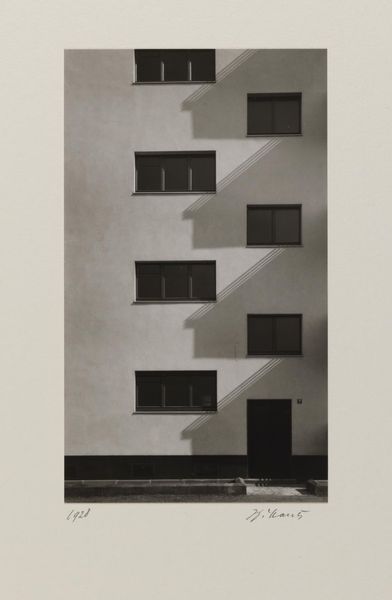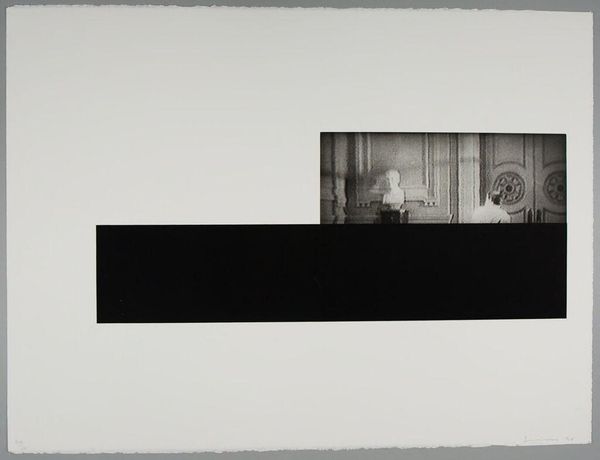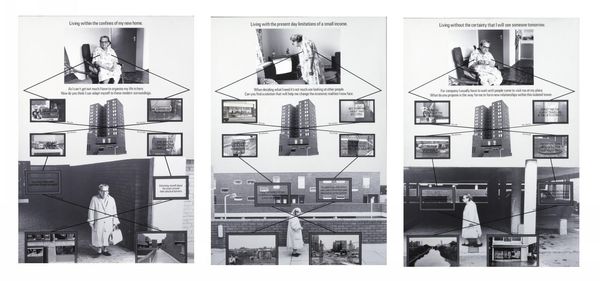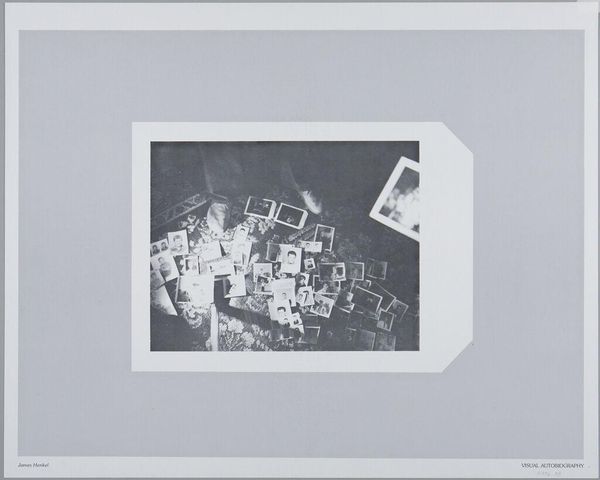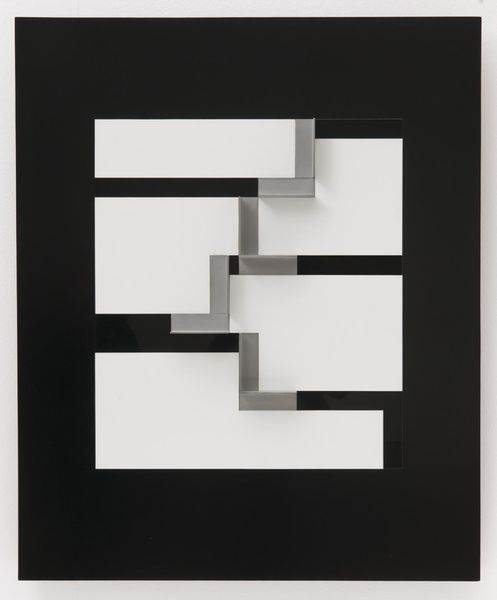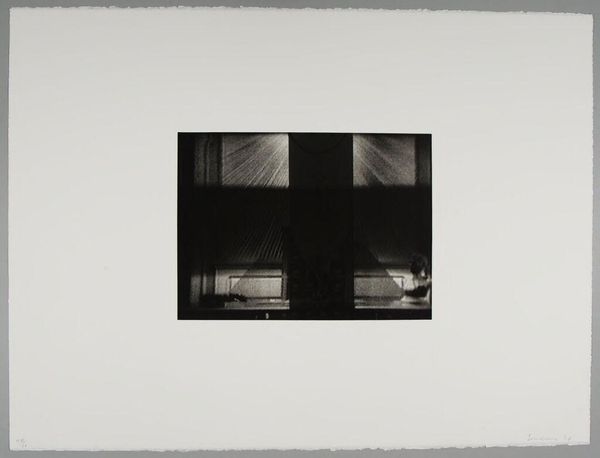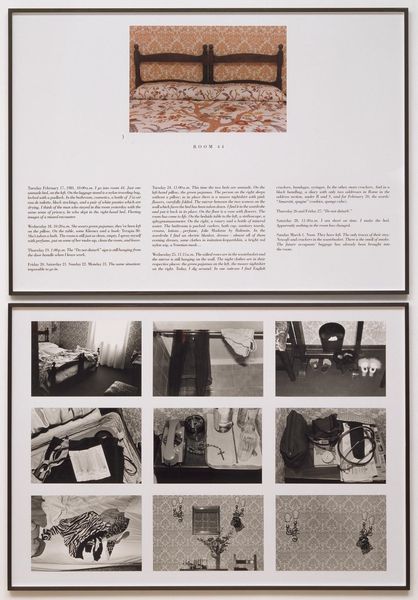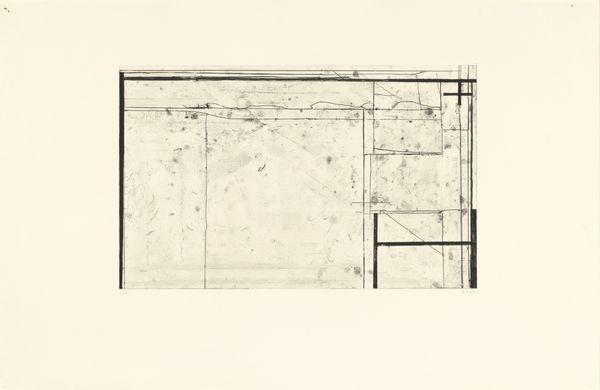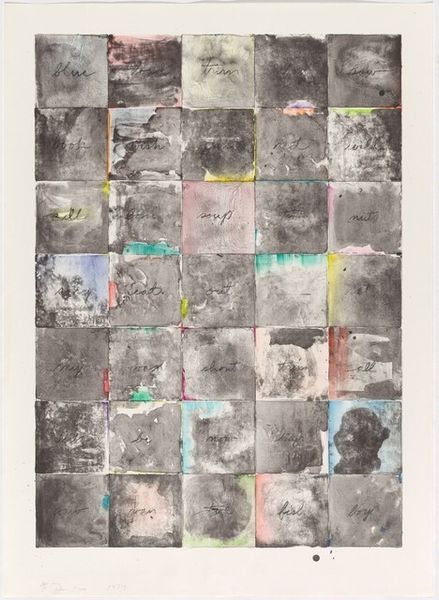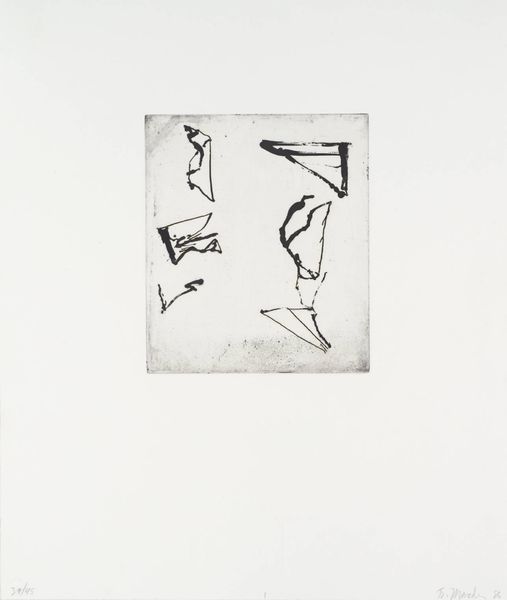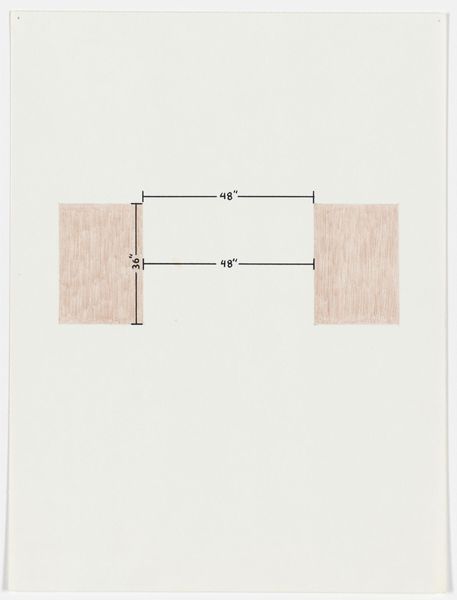
collage, photography
#
abstract-expressionism
#
negative space
#
collage
#
conceptual-art
#
photography
#
geometric
#
line
#
cityscape
#
modernism
Copyright: http://www.stigbroegger.net/shooting
Curator: Stig Brøgger’s "Indoor Outdoor," created in 1969, is a striking example of conceptual art, utilizing photography and collage elements to question our perceptions of space. It presents an interplay of interior and exterior worlds. Editor: My immediate reaction is one of disorientation, actually. The stark contrast between the crisp architectural lines and the grainy photographic images is intriguing, though. It creates a sort of unsettling balance, doesn’t it? Curator: Precisely. The geometric lines impose order, dissecting the image and framing disparate photographic scenes within what appear to be three-dimensional, almost architectural spaces. There is this dance of positive and negative space with this collage style... Editor: But the materials are telling. The choice of black and white photography, especially, signals the availability and accessibility of photographic processes during that time. This seems less about pure aesthetics and more about deconstructing the image-making process itself. How do the conditions of production shape what we perceive? Curator: One could say that the black and white images, arranged according to a set logic with their relationship to the constructed linear frames, directs one toward more essential structures; each image is thus positioned relative to the others within a precise visual schema. The woman featured and each setting, as well as their various compositions and shapes, become secondary to the structural intent. Editor: Interesting. I think that foregrounds something quite specific; that is, by using such a readily accessible medium—photography—he democratizes artmaking. It’s not just about high art in this instance; it is about inviting broader engagement with the means through which our world is visualized and then reproduced through artistic representation. Curator: Absolutely, but he's using photography and the basic geometric elements of composition, line and the square, to comment upon visual schema. Editor: I agree, Stig Brøgger compels us to really think about the relationship between making and meaning, doesn’t he? Curator: Indubitably. "Indoor Outdoor" offers a lens through which we might consider visual syntax, or how spaces—real or constructed—inform how we comprehend our lived surroundings. Editor: And from a materialist point of view, how accessible materials allowed such ideas to be visualized for wider dissemination. It all goes hand-in-hand.
Comments
No comments
Be the first to comment and join the conversation on the ultimate creative platform.
